Photographs by John Salmon. You may use the images without prior permission for any scholarly or educational purpose as long as you (1) credit John Salmon and (2) link your document to this URL in a web document or cite the Victorian Web in a print one. Click on the images to enlarge them.

Chapel to the Hospital of St John & St Elizabeth, originally designed by George Goldie for the Great Ormond Street hospital of St Elizabeth, and built there in 1862-63. The hospital had been founded by Cardinal Wiseman in 1856, and placed under the care of the British chapter of the Knights of St John of Jerusalem; the chapel itself was founded by Sir George Boyer, a member of the order, whose tomb is inside, in front of the high altar. When the hospital moved to St John's Wood in the 1890s, the chapel was moved too: indeed, the foundation stones for both were laid on the same day, 7 June 1899. The Duke of Norfolk laid the one for the hospital, and Cardinal Vaughan laid the one for the chapel. The latter was carefully rebuilt, with only slight adaptations, by Goldie's son Edward (see Strang). At this time the name of the hospital was changed as well, to include reference to St John as well as to St Elizabeth.

The listing text tells us that the chapel is of "Portland stone, stock brick, stone and red brick dressings," and has lead roofing. Its elegant Italianate frontage is distinguished by roundels bearing Maltese crosses. The tablet over the lunette carries the chapel's dedication, Boyer's name, and the original year of completion (1863). On the pediment frieze is the Knights' motto, "SERVI: DOMINORUM: PAUPERUM: INFIRMORUM:" which also proclaims the hospital's purpose, to serve the poor and the sick. This baroque Grade II* listed building stands in the middle of the hospital range, in Grove End Road, St John's Wood, London NW8.
The hospital was staffed by the Sisters of Mercy, an order best known for its work with Florence Nightingale in the Crimea. Intended for people with long-term and often incurable conditions, such as tuberculosis, it had a hospice element from the start. But despite its charitable purposes, the chapel has a very lavish interior, "[l]ined with Corinthian pilasters in polished red Sicilian jaspar, marble plinths and bases, gilded capitals" (listing text), with its high altar under a baldachino, marble flooring in the sanctuary, chandeliers, and so on.
Interior

Interior, looking east.

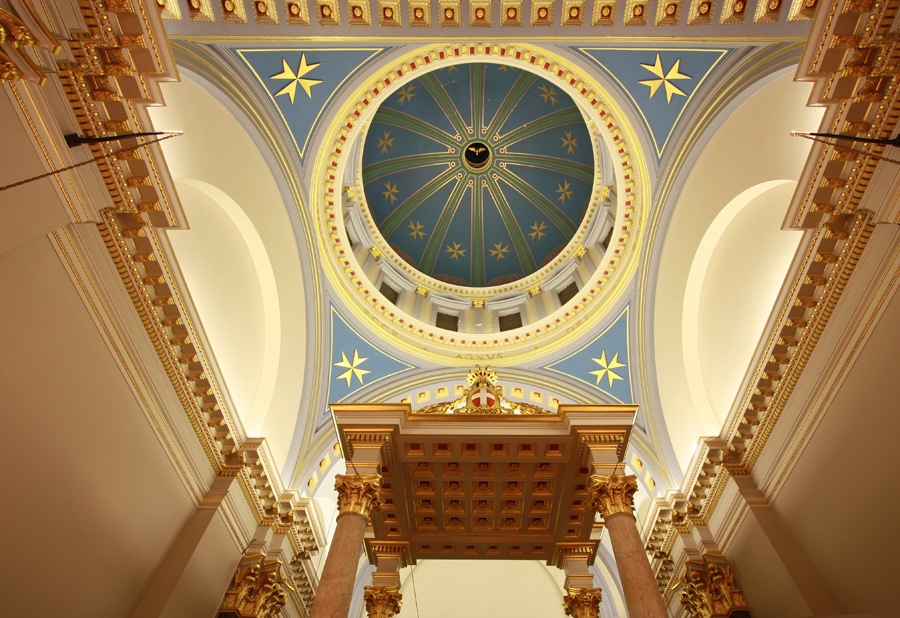
Left: Looking into the sanctuary. Right: The splendid painted dome of the sanctuary.
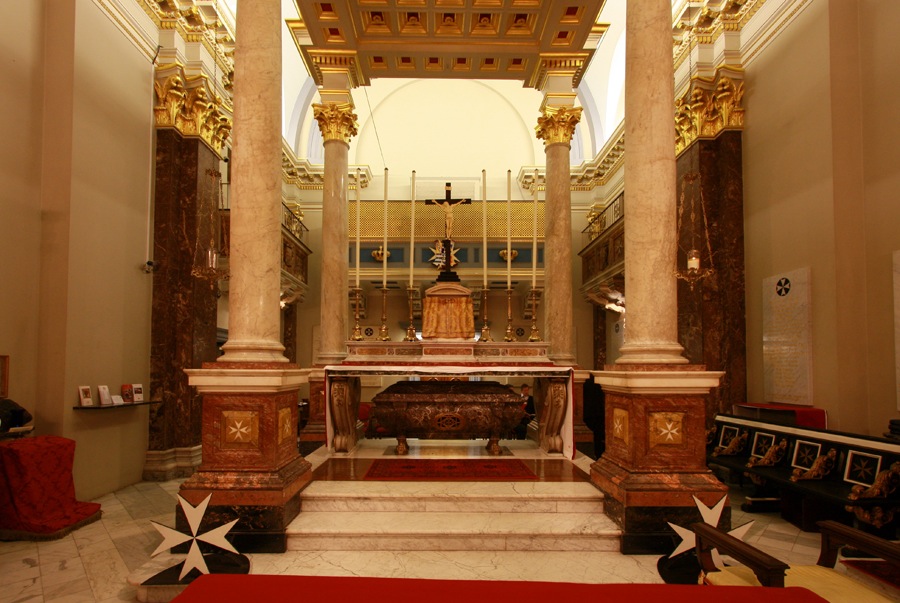
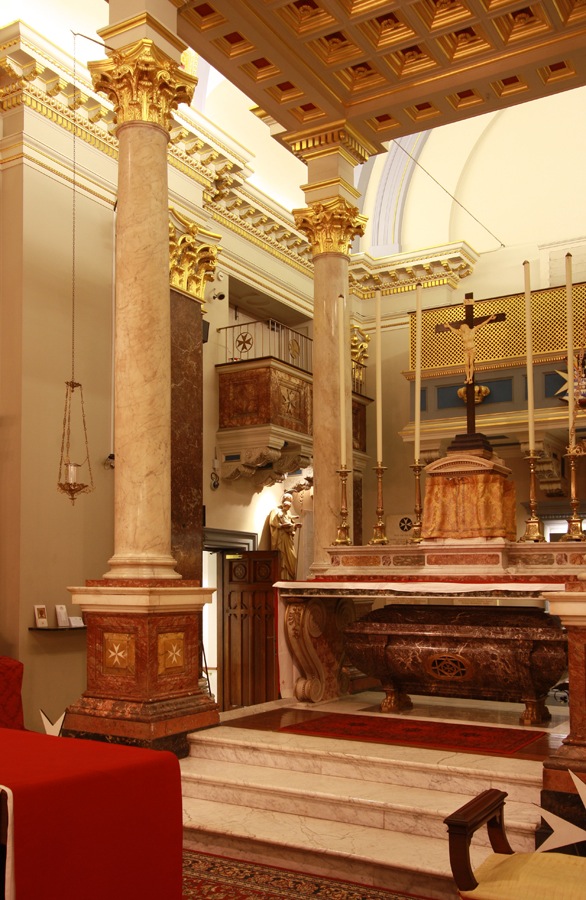
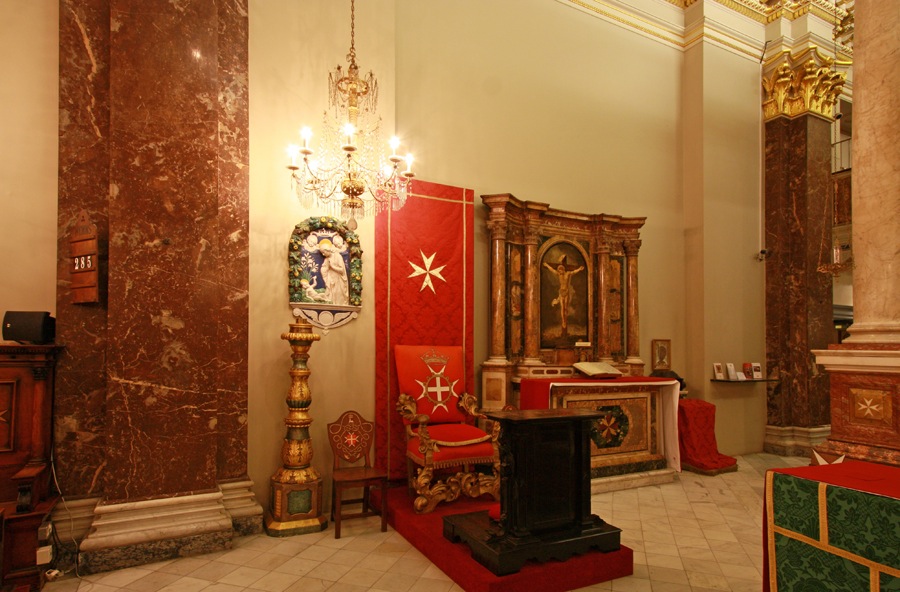
Left to right. (a) Looking through the baldachino to the high altar. At the top of the three steps is Boyer's tomb. (b) Looking left through the baldachino at the ornately bracketed alabaster choir tribune, matching one at the other side. (c) The side altar here, probably Italian and pre-Victorian, the gift of Lord Petre.
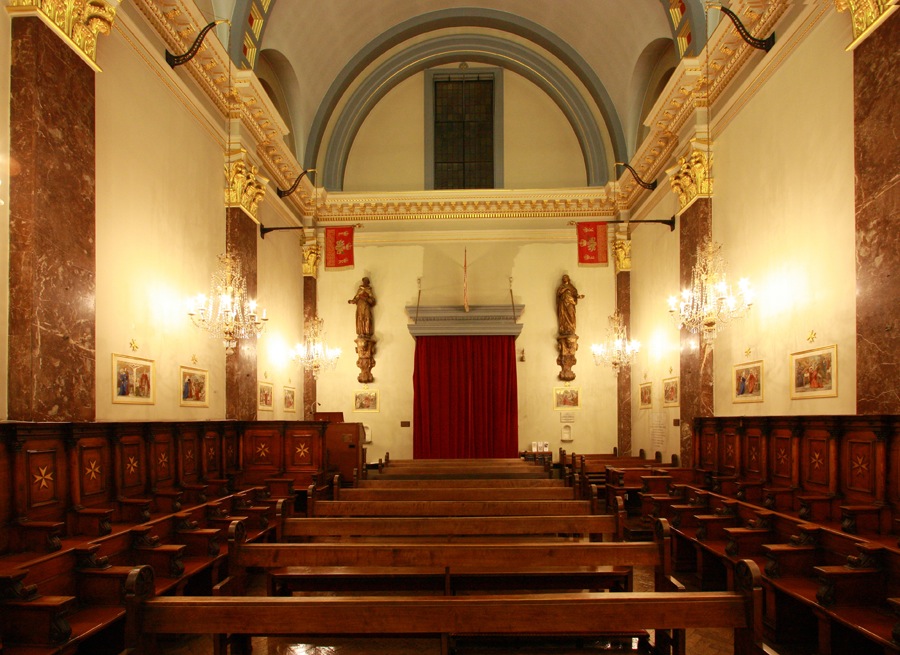
Looking west towards the main entrance. One of the changes made as a result of the move was in the nave flooring, from coloured tiles to wood-block, laid around 1898.
Fixtures and Fittings
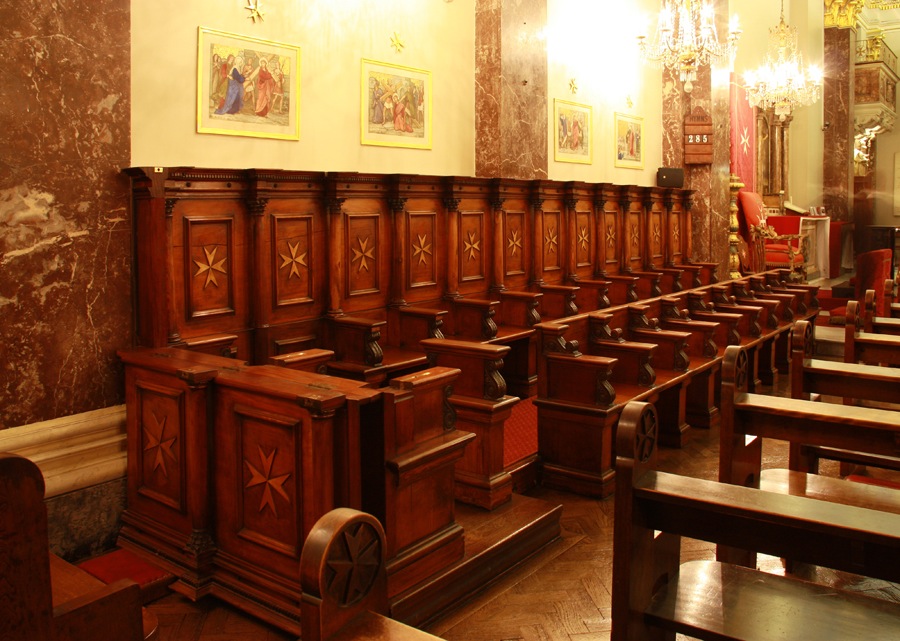
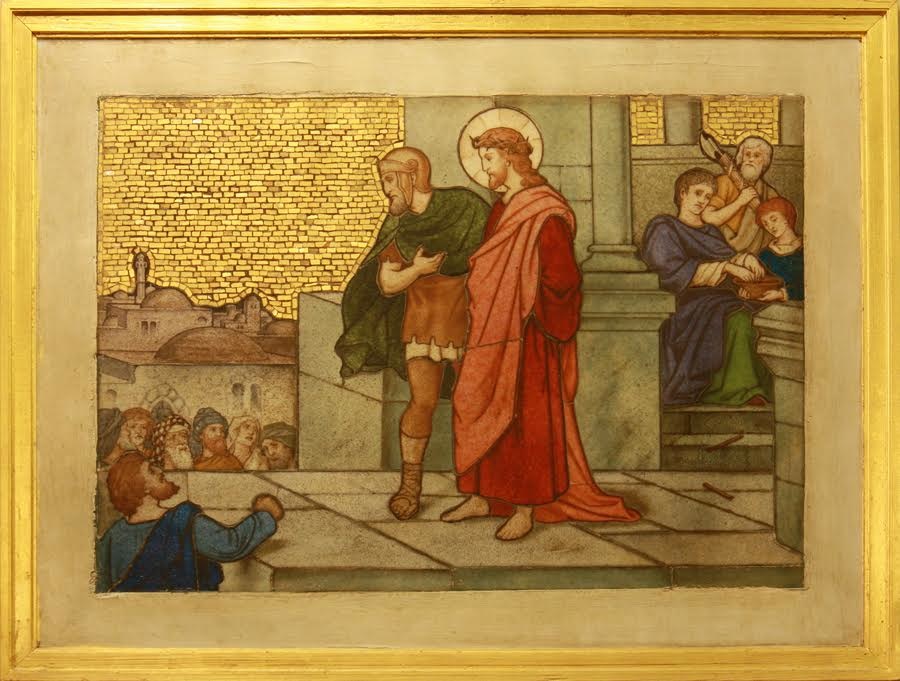
Left: Stalls. Right: The first Station of the Cross.
As shown above left, the seating is as handsome as everything else, in mahogany, with those inlaid Maltese crosses making a vivid contrast. The Stations of the Cross along each side of the nave are also very beautiful. Described in the listing text as ceramic, they have gold mosaic skies. The first one, Jesus with Pilate, about to be condemned to death, is shown on the right here.
In fact, everything in the chapel is of the finest materials and workmanship, with the Maltese cross very much in evidence. Many of the fittings were gifts. The high altar itself was given by the Grand Master to the British Knights, and was made in Rome, designed by the architect Augusto Innocenti, carved by the sculptor Teodoro Augusti, and dated 1864. The listing text also tells us that another side altar and the tabernacle were both the gifts of Cardinal Wiseman, while the chandeliers were from Bowyer himself.
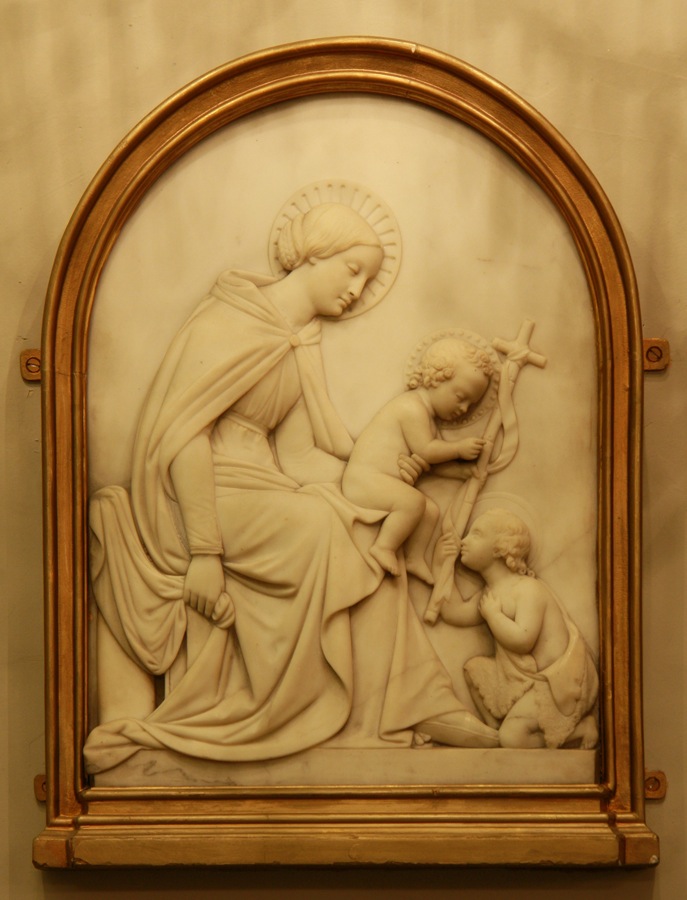
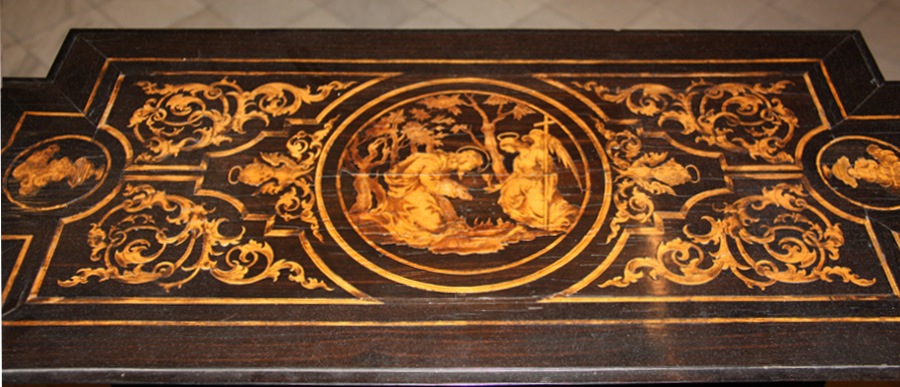
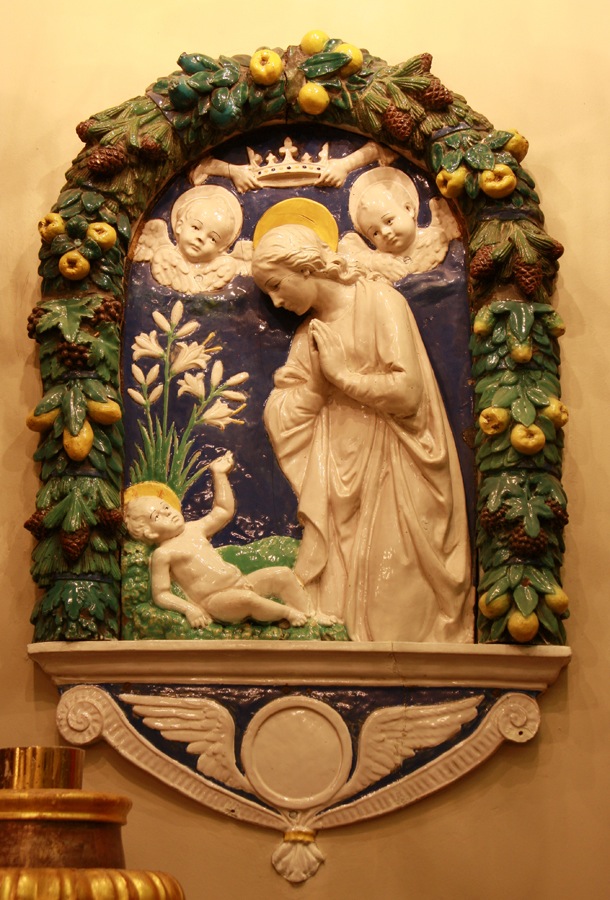
Left to right: (a) A lovely Madonna and Child relief, with the infant St John as well. (b) Inlaid prie-dieu, perhaps showing Jesus and the angel in the Garden of Gethsemane. (c) Another Madonna and Child scene in what looks like Della Robbia ware.
As well as offering opportunities for prayer and re-dedication, this lovely chapel bears continuing testimony to the origins and purpose of what is now a world-class hospital. It is an oasis of peace, beauty and hope in this busy part of London.
Bibliography
"Chapel (only) to the Hospital of St John and St Elizabeth." Historic England. Web. 24 October 2016.
Cherry, Bridget, and Nikolaus Pevsner. London 3: North West. London: Penguin, 1991.
"Hospital of St John & St Elizabeth: A History in Photographs." Web. 24 October 2016.
Strang, Jeanne. "Hospital of St John and St Elizabeth." St John's Wood Memories. Web. 24 October 2016.
Created 24 October 2016